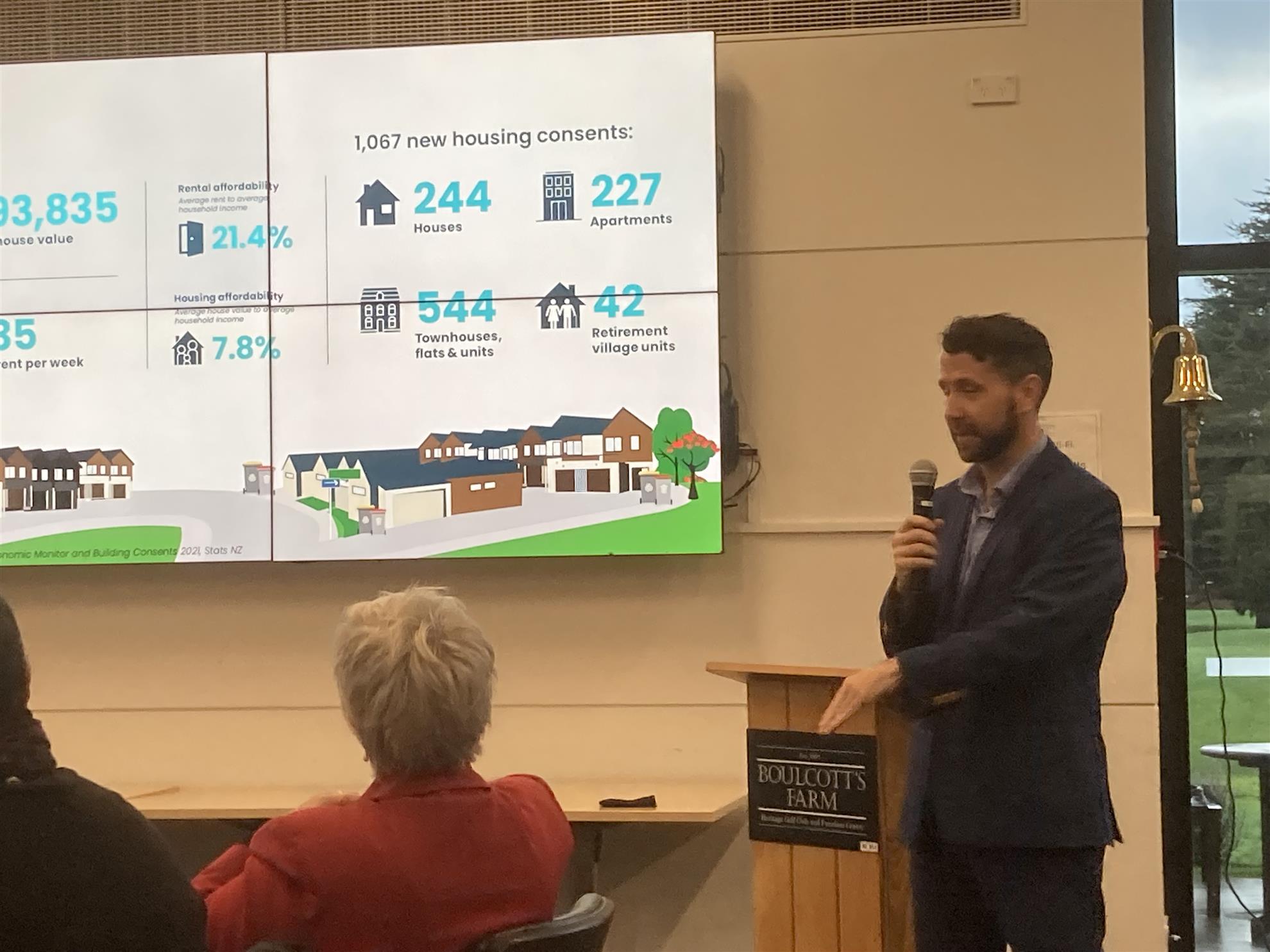
The Mayor of Hutt City, Campbell Barry, spoke at our meeting on 3 August, on the state of the city and Council’s current priorities and challenges. This continues an association between the Club and the Council that stretches back to 1943, with the then Mayor John Andrews being elected as the Club’s inaugural President. Campbell was 28 years old when first elected as Mayor - one of the youngest Mayors in NZ at the time.
The Council is grappling with the need for large investments in infrastructure because of the physical characteristics of the city (the Hutt Valley is the largest flood plain in NZ), climate change, rapid population growth, and social inequality.
Major planned investments include $587 million for Three Waters, $406 million for transport improvements, $136 million for Riverlink and $89 million for the replacement of the Naenae Pool complex.
After static or declining numbers ten years ago, the Hutt City population is today around 113,000 and is expected to reach 150,000 by 2043 (100 years after Rotarian Mayor John Andrews). As a result, very high levels of house construction are required over the next twenty years. In 2021, 1067 new residential consents were issued, including 244 houses and 544 town houses.
While the Council has concerns about the effect on heritage areas of higher density residential rules and relaxed parking requirements imposed by central government, Council is obliged to work with this changing environment.
The Council values key partnerships, with Mana Whenua represented by five Iwi organisations and two Marae, and with the Club in the ongoing development of the Hutt River Trail and Innovative Young Minds. He also noted the recently formed Wellington Regional Leadership Committee, which aims to cooperate and plan a shared approach to problems and find the best outcomes to maximize the benefits across the region.
